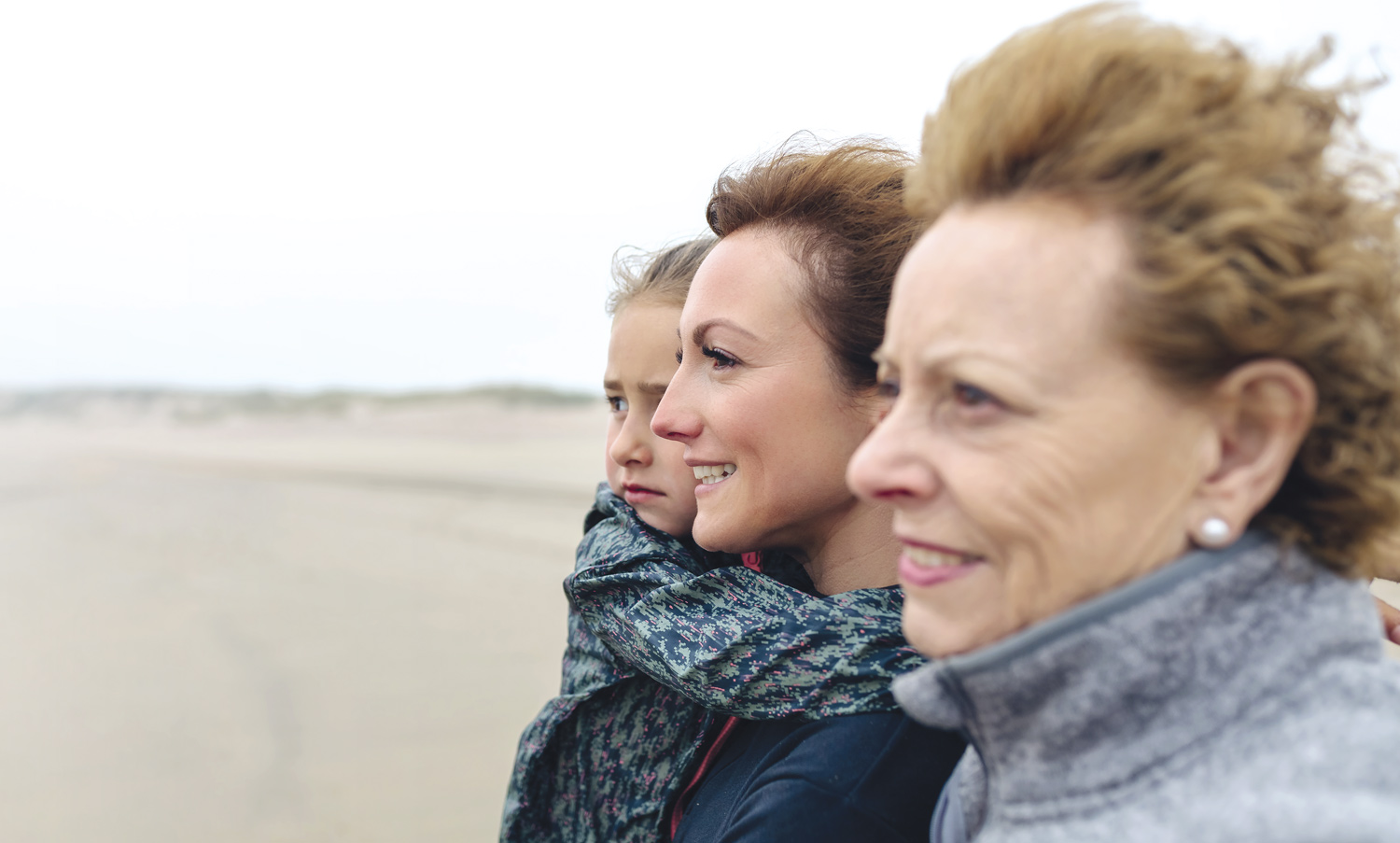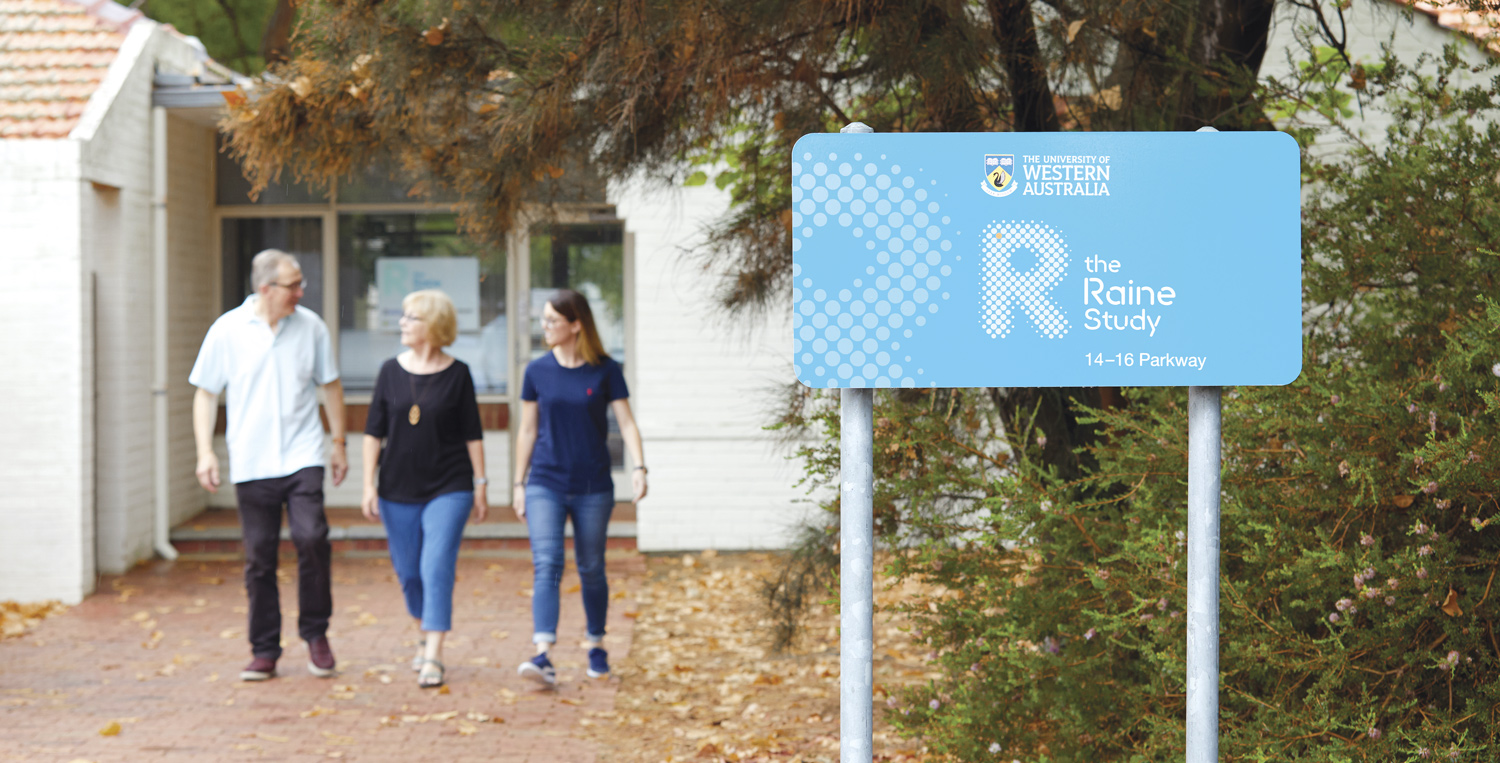
As the WA Raine Study – the world’s longest-running prebirth cohort study – launches its biggest follow-up, Suzanne Harrison explores both sides of the equation.
One of Charlotte Diaz’s earliest memories were special outings to meet a woman named Sue, based in the Raine Study’s then centre in Subiaco. There, Charlotte would be involved in fun activities, an experience the now 32-year-old professional and mother says were something she looked forward to.

“Sue made it fun, and I felt excited to be a part of it,” says Charlotte, who now works as a community relations practitioner for a mining company. “My parents are very altruistic by nature and because of that, they provided me with what it was to be a part of something bigger. By playing a small role, I was contributing something about me that could unlock some major breakthrough in research.”
Charlotte, for example, had asthma as a child, and realised that if being a Raine Study volunteer could result in a better way of managing the condition, then “it was a privilege”.
From a very early age, Charlotte – like many others in Western Australia – was a research subject in a this truly unique multi-generational study, one that has tracked almost 3000 young adults over 33 years since they were
18 weeks in-utero.
“I remember the physical tests, like seeing how many sit-ups we could do in a minute, but I mostly remember going to the Lion’s Eye Institute, which was fascinating, as that was like an optometrist on steroids. It was a great way to learn about my own health while knowing it’s being used in research data.”
For 33 years, 2900 Perth women and the 2868 children they gave birth to between 1989 and 1992 have taken part in different research studies tracking their physical and mental health.
Starting with a study of the impact of ultrasound during pregnancy when it first started, the Raine Study has collected millions of bits of biological, lifestyle, and environmental information from these babies and their parents at multiple checkpoints through infancy, childhood, adolescence and adulthood.
Those parents (Generation one) and their babies (Generation two) have since taken part in 17 different follow-up studies, contributing to ground-breaking research on physical health, mental health, lifestyle, and genetics. The babies are now 33 years old and are having their own children (Generation three).
The Raine Study was a world first when it came to investigating the origins of a child’s future health from before birth, and it continues to use this information to demonstrate the prebirth origins of disease and ill-health not only in childhood but through adolescence and into adulthood.
In collaboration with its participants, the Raine Study has collected extensive data on health, mental health, behaviour, environment as well as social, educational and work outcomes.
It holds more than 30,000 phenotypic data points, 30 million genetic data points, and more than 170,000 biosamples (blood, saliva, faeces, cord blood, baby teeth) and has been able to link this (anonymised) data to WA government sources including school and hospital records.
Thanks to the Raine Study, researchers have established the direct link between a pregnant woman’s health choices and her child’s health outcomes, which have gone on to inform global health policy, from setting fetal growth standards to confirming that children conceived via IVF have the same long-term health outlook by adulthood as their naturally conceived counterparts.
Furthermore, the Raine Study recently announced that a grant from the Telethon Trust will enable it to start recruiting all current and future children born to the original Raine Study babies. That is, babies such as Charlotte’s now two-year-old, Chloe, who Charlotte says will definitely be involved in the research.
World beater

This will make it the first three-generation pregnancy cohort study in the world, with the potential to improve understanding of the intergenerational determinants of health and wellbeing across three generations.
This latest study has been called the Generations Follow-Up and to be successful, it needs to complete assessments with as many of the original parents and their now 33-year-old offspring as it can over the next three years.
Associate Professor Rebecca Glauert, the University of Western Australia’s Scientific Director, says the Raine Study has been exceptional at maintaining contact with the families involved.
“Now, they are excited and enthusiastic to bring their children in. It’s something that they’re giving back to society, and their generosity of spirit to medical science is so significant,” she said.
For participants, it’s also informative for their own health and wellbeing.
The study keeps their baby teeth, faecal collections, sperm, data on what they eat, how they sleep – to name a few. Participants can access all this information and meet other participants, attend symposiums and keep up with those involved, if they so wish.
Researchers from all Australia and the world can also access the study’s data.
Since 2014, research is undertaken at Raine Study house at UWA. For the original generation two children seen first at the age of two or three, right up to the late 20s, they were studied in Subiaco within the old Princess Margaret Hospital.
As Dr Glauert explains, there are other birth cohort studies in the world, but the Raine is the first and longest running pregnancy cohort study globally and its expansion will have exponential benefits.
“It’s not just the collection of new data. The addition of this third generation of participants will mean that existing data can be applied in new ways to enable intergenerational research that simply hasn’t been possible before now.”
Chronic watch
Current health data shows that around 40% of children in Australia will develop a long-term health condition. Researchers will now be able to trace the causes of these conditions across multiple generations and potentially intervene to reduce the likelihood of them developing.
“The first study (with Generation one) focused on ultra-sounds during pregnancy, and the findings of that had significant impact on the lives of babies. The IVF study was equally as interesting and there has been a lot of work done of phthalates from plastics. There are 700 publications that have come out since the original cohort was recorded,” she said.
Telethon Kids Institute’s Professor Graham Hall said he had been involved with the Raine Study for many years, leading lung function follow-up tests when the participants were 22 years of age. The measures taken then built upon previous lung function testing done at age five and 14.
“We’ve been really interested in looking at what factors are associated with kids whose asthma persists into adulthood,” Professor Hall said. “Because the Raine Study has collected so much information over the years, we can start to tease out what those factors might be and look at why some kids will grow out of their childhood asthma, but also why others don’t.”
There are currently more than 150 researchers utilising the Raine Study. The investigators bring expertise from 25 broad areas of research including asthma and atopy, cardiovascular and metabolic heath, childhood developmental growth, dental health, diabetes, genetic epidemiology, gastro-enterology, infection and immunity, mental health, musculoskeletal development, nutrition, physical activity, ophthalmology, pregnancy and birth, reproductive health, sleep and risk-taking behaviour.
The study also focuses on socio-economic factors and is representative of the WA population as a whole.
For those new to the Raine Study, the question begs – how did they find the original cohort and why is it called the Raine Study?
 Mary’s vision
Mary’s vision
Mary Bertha Raine was born in London in 1877, the eldest of 13 children. She arrived in Perth in 1904 aged 23 and, despite humble beginnings, she was a strong and astute woman who worked hard and soon invested and built multiple property assets, notably the Wentworth Hotel in what is now Raine Square.
Mary’s second husband and business partner, Arnold ‘Joe’ Yeldham, died in 1957, and the devastated Mary donated her financial legacy to UWA. The Joe and Mary Yeldham Foundation was born, initially to research the causes of arteriosclerosis, the cause of Joe’s death. Upon her death in 1960, Mary bequeathed nearly $1 million to the Raine Foundation (now the Raine Medical Research Foundation).
Nearly 30 years later, a young obstetrician named John Newnham had a chance meeting with the foundation’s accountant. The accountant told him they were looking for a grant to begin a large-scale visionary project.
The application was speedily submitted, and the award was made. The Raine Study team got underway immediately. The women recruited were randomly assigned either routine obstetric ultrasound or multiple scans.
Extensive data was collected during pregnancy and the children were assessed at birth. All the women were volunteers who were approached at King Edward Memorial Hospital (KEMH), a story that Charlotte’s mother told her when she was so young, she has never not known about it.
Dr Glauert says the Generation one women were recruited between 1989 and 1992, but what makes it so special is now that “their babies are having babies”.
An additional group is Generation zero, the grandparents of Generation two.
Between 2019 and 2019, grandparents were invited into the Raine Study for the first time. The initial focus was on breast density following breast scans of generation two female participants and their mothers (Generation one).
Now, with the advent of Generation three, Dr Glauert is calling on anyone who was once part of the Raine Study to get back in contact, via the website, email, social media, or telephone.
She wants past participants to know that it’s never too late to re-engage with the Raine Study.
Never too late
“It doesn’t matter how long it’s been since you last saw us, or where you might be in Australia or around the world – you’ll always be part of the Raine Study. Your involvement in the Generations Follow-Up will make the Raine Study incrementally, exponentially better.”
For someone like Charlotte, it’s been a part of her life – and she is more than happy it has been.
“My colleagues and I were doing an ice breaker and we were asked to tell everyone something about us and mine was that I am part of the world’s longest pregnancy cohort,” Charlotte says. Someone else said, ‘so am I’ and straight away we had this bond. You know what it involves and how that has contributed.”
The Raine Study is a joint venture between UWA, Curtin University, Telethon Kids Institute, Women and Infants Research Foundation, Edith Cowan University, Murdoch University and University of Notre Dame Australia. Flinders University in South Australia and Newcastle University in New South Wales are institutional partners. The study receives additional funding support from the Raine Medical Research Foundation and National Health and Medical Research Council.
Former Raine Study participants can update their contact information at: https://rainestudy.org.au or email rainestudy@uwa.edu.au

